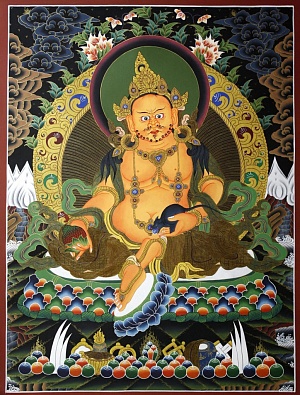News
-
 Pranayama workshop, Mar 1-7
Pranayama workshop, Mar 1-7
-
 21-day Pranayama challenge
21-day Pranayama challenge
-
 Nāda meditation workshop, January 8-12
Nāda meditation workshop, January 8-12
-
 April 3, Navaratri with Yogi Matsyendranath Maharaj, Australia, Queensland
April 3, Navaratri with Yogi Matsyendranath Maharaj, Australia, Queensland
-
 March 17, 2020. Purifiying Pranayama With Yogi Matsyendra Nath
March 17, 2020. Purifiying Pranayama With Yogi Matsyendra Nath
-
 November 2019, Tantra Workshop Series in Argentina
November 2019, Tantra Workshop Series in Argentina
-
 Workshop in Gualeguaychu
Workshop in Gualeguaychu
-
 17-18 November 2018, Yogi Matsyendranath in Źarate (Argentina)
17-18 November 2018, Yogi Matsyendranath in Źarate (Argentina)
-
 15-16 November 2018, Yogi Matsyendranath visit to Uruguay
15-16 November 2018, Yogi Matsyendranath visit to Uruguay
-
 12 Nov 2018, Lecture at USAL (Salvador University)
12 Nov 2018, Lecture at USAL (Salvador University)
-
 10-11 November 2018, Workshops in Quilmes and La Plata (Argentina)
10-11 November 2018, Workshops in Quilmes and La Plata (Argentina)
-
 8 November 2018, Open conference in Necochea (Argentina)
8 November 2018, Open conference in Necochea (Argentina)
-
 2,3,4 November 2018 - Participating in XVI Retreat International of Yoga and Meditation
2,3,4 November 2018 - Participating in XVI Retreat International of Yoga and Meditation
-
 Programme in Québec (Canada) 13-16 June
Programme in Québec (Canada) 13-16 June
-
 Melbourne Book Launch
Melbourne Book Launch
-
 4-years Summer Program
4-years Summer Program
-
 Biography of a Russian Yogi
Biography of a Russian Yogi
-
 November 2017, Visit of Yogi Matsyendranath to Argentina
November 2017, Visit of Yogi Matsyendranath to Argentina
-
 Satsangs of Yogi Matsyendranatha Maharaj in Berlin
Satsangs of Yogi Matsyendranatha Maharaj in Berlin
-
 Seminars and trainings in June-July 2015 (France)
Seminars and trainings in June-July 2015 (France)
Nidhi
Nidhi
 निधि, nidhi
निधि, nidhi
“store”, “hoard”, “treasure”
Nidhi is most often translated as a treasure, but there are also other meanings:
- a vessel (reservoir)
- a barn as a storage area;
- an ocean
- chronology (as the science of time, history);
- one of Vishnu’s names;
- a person endowed with many positive qualities.
Ashtanidhi
In “Srimad Bhagavatam” (10.50.55), “Garuda Purana” (53), “Markandeya Purana” (68) eight (aṣṭa) nidhis are mentioned. Among them (with a description from “Garuda Purana”):
-
padma (lotus flower) – a person who has the mark of padma becomes sattwika. He is benevolent in nature, collects gold, silver, etc. and dedicates them to ascetics, gods and priests.
-
mahapadma (great lotus) – a person who has the mark of mahapadma distributes wealth to people following dharma. People wearing the signs of padma and mahapadma-nidhi are called sattwikas.
-
makara (marine animal) – a person who has the mark of makara becomes a collector of swords, arrows, and spears. He distributes wealth to people who have knowledge of śruti and makes friends with kings. Enemies will kill him in battle. Makara and Kacchapa are two tamasica-nidhi.
-
kacchapa (turtle) – a person who has the mark of kacchapa, obeys no one and trusts no one; does not enjoy his wealth and does not share it with anyone. This man keeps his wealth buried underground and remains lonely.
-
nanda (flute) – a person with the mark of nanda – who simultaneously has both the properties of rajas and tamas – becomes the mainstay of his family. He enjoys flattery and will have many wives. He loses interest in old friends and makes friends with new ones.
-
nīla (sapphire) – one who has the mark of nīla is endowed with the virtues of sattva. He will collect jewelry, grain, etc. He has the masculinity and strength of three people. This person will plant mango groves, make reservoirs, etc.
-
mukundā (drum) – is rajasika in its properties. A person who has this mark becomes a collector of kingdoms. He freely enjoys all good things and makes gifts to musicians and women.
-
śaṅkha (shell) – indicates egocentrism. He spends all his wealth on his own pleasure. His servants and relatives eat poor food and don’t wear good clothes. One who has the sign of śaṅkha feeds himself diligently and doesn’t give his money to anyone.
In yogic literature, ashta-nidhi are often associated with ashta-siddhi, as well as eight sides of the world. In “Gorakh Bani” are listed 8 mudras of the body, each corresponding to 8 cardinal directions. The same relationship can be traced in the yantras, where goddesses and their asters are located on 8 sides.
Symbolically they are denoted as treasures, but by nidhi it means more, for example: puṣṭi (prosperity), bala (strength), kīrti (glory), i.e. certain “abilities”, “achievements”, but something more mundane than siddhi.
“Nidhis are auxiliary elements for development of siddhis, they have about the same relationship as mudras with bandhas, or chakras with adharas... My Guru said that bandhas develop abilities (nidhis) (i.e. body powers, glorification, tejas-radiance, etc.), and mudras reveal siddhis, this level is higher than nidhis. Therefore, bandhas are used in pranayamas to direct prana into kanda and to induce Kundalini-shakti with it.”
Guru Yogi Matsyendranath Maharaj
For a yogi, nidhis are more symbolic:
“They [nidhis] for a yogi are symbolic and associatd with various energies that must be taken under control of one’s consciousness. Siddhis are inner faculties of integrated consciousness, and nidhis are what is realized and reveals the individual consciousness.”
Guru Yogi Matsyendranath Maharaj
Navanidhi
9 nidhis, or nava-nidhi (नवनिधि), are found among the treasures that Hanuman possesses (according to “Hanuman-chalisa” and “Ramayana”), as well as it can be Kubera’s treasures that he keeps underground. It is possible to draw an indirect correspondence between 9 treasures, ratna (in different sources there are from 9 to 14) that appeared during the samudra-manthan, and 9 nidhis:
- mahapadma – “the great lotus flower”;
- padma – “lotus flower”;
- śaṅkha – “shell”;
- makara – “marine animal” (vahana of Ganga and Varuna);
- kachhapa – “turtle”;
- kumuda – “a kind of gemstone”;
- kunda – “jasmine”;
- nīla – “sapphire”;
- kharva – “dwarf”.

